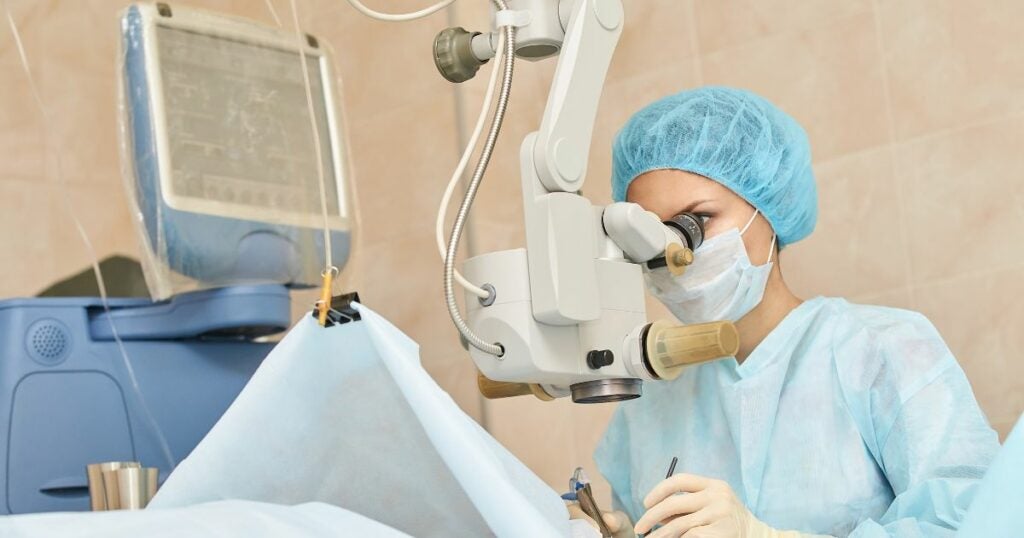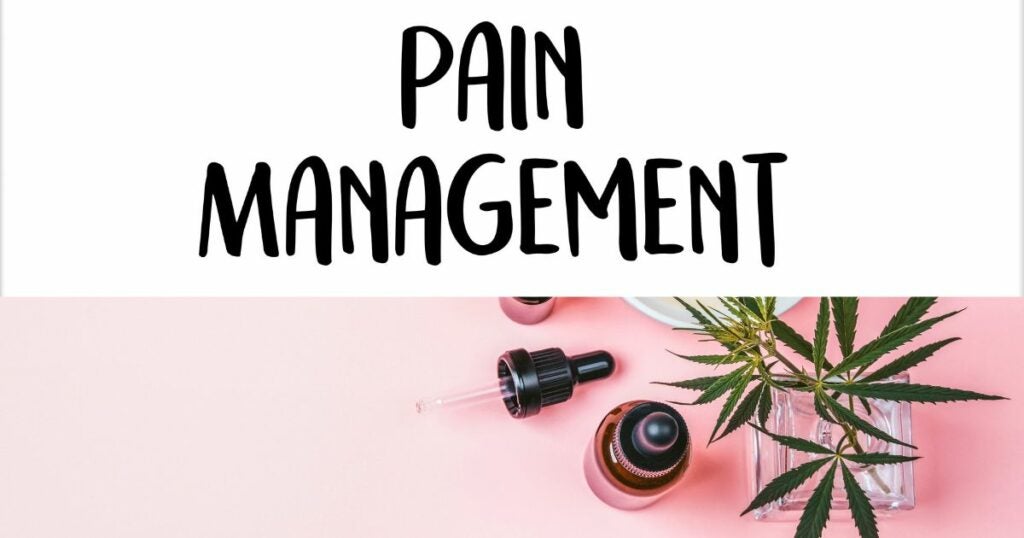Your cart is currently empty!
Smoking Weed after LASIK: Risks and Rewards
Smoking weed after LASIK: a hazy topic with high stakes. In just a few moments, we’ll uncover the potential risks, the tantalizing rewards, and everything in between. Fasten your seatbelts; we’re about to clear the smoke.

Understanding LASIK Surgery
Before we dive into the hazy realm of cannabis, let’s shed some light on LASIK surgery itself. LASIK, short for Laser-Assisted In Situ Keratomileusis, is a revolutionary procedure to correct vision problems, often eliminating the need for glasses or contact lenses. It involves reshaping the cornea to improve how light enters the eye. While LASIK offers remarkable benefits, it’s not without its recovery process.
After LASIK, patients typically experience improved vision within a few days. However, the full healing process may take several weeks. It’s essential to be cautious during this time, as the cornea needs to stabilize, and any complications can affect your long-term results. Let’s now explore how cannabis fits into this picture.
Cannabis and Its Effects
Cannabis, often referred to as marijuana or weed, is a complex plant with numerous chemical compounds, but the two most well-known are tetrahydrocannabinol (THC) and cannabidiol (CBD). These compounds interact with the endocannabinoid system in the body, producing various effects.
THC is the psychoactive component of cannabis, responsible for the “high” that users experience. CBD, on the other hand, is non-psychoactive and has gained popularity for its potential therapeutic benefits. When considering cannabis use after LASIK, it’s crucial to understand how these components affect the body and mind.
The effects of cannabis can vary significantly depending on the strain and potency. Some strains are more relaxing and sedating, while others are energizing and uplifting. The potency of THC can also vary, with some strains containing higher levels that may induce more pronounced psychoactive effects.
In summary, cannabis is a complex plant with varying effects on the body and mind. Before diving into cannabis use post-LASIK, it’s crucial to consider the strain, potency, and how it may impact your recovery. In the following sections, we’ll delve deeper into the considerations and precautions you should take when contemplating the use of cannabis after LASIK surgery.
Risks and Considerations
Discussing Potential Risks of Smoking Weed After LASIK
While cannabis may hold appeal for its potential benefits, it’s essential to acknowledge the risks associated with smoking weed after LASIK. Smoking, in general, can irritate the eyes and delay the healing process. This risk is amplified in the case of LASIK, as the eyes are compassionate during recovery.
Impact on Eye Health and Healing Process
Cannabis smoke contains irritants that can cause redness, dryness, and discomfort in the eyes. These effects can be especially problematic when your eyes are in the critical phase of healing post-LASIK. Disrupting the healing process can lead to complications and affect the outcome of the surgery.
Interactions with Post-Surgery Medications
LASIK patients are often prescribed medications to aid in the healing process and prevent infection. Cannabis may interact with these medications, potentially reducing their effectiveness or leading to unforeseen side effects. It’s crucial to consult with your LASIK surgeon or medical professional regarding any potential drug interactions before resuming cannabis use.
Alternative Consumption Methods
Introducing Alternative Ways to Consume Cannabis
For LASIK patients who wish to incorporate cannabis into their pain management routine, alternative consumption methods provide a safer and more eye-friendly option. Let’s explore some alternatives that can help you avoid the risks associated with smoking.
Edibles, Tinctures, Vaporizers, and Topicals
- Edibles: Cannabis-infused edibles, such as gummies or chocolates, offer a smoke-free way to experience the benefits of cannabis. They are discreet and provide a longer-lasting effect. However, they require patience, as the onset can be slower compared to smoking.
- Tinctures: Tinctures are liquid extracts that can be taken sublingually (under the tongue) or added to food and beverages. They offer precise dosage control and a relatively rapid onset of effects.
- Vaporizers: Vaporizing cannabis involves heating the plant material or concentrates to release vapor without combustion. Vaporizers are a smokeless alternative that reduces the harmful byproducts associated with smoking. They provide quick onset and are a less harsh option for your eyes and overall health.
- Topicals: Cannabis-infused creams, balms, and lotions are designed for external use and are ideal for localized pain relief. They won’t produce a psychoactive high, making them suitable for LASIK patients.
Benefits and Drawbacks of Each Method for LASIK Patients
These alternative methods are crucial for LASIK patients to ensure a smooth recovery. While they offer a safer way to consume cannabis without irritating your eyes or compromising healing, it’s essential to understand their specific benefits and drawbacks to make an informed choice.
Timing and Precautions
Providing Guidance on When It’s Safe to Resume Cannabis Use
Timing is critical when it comes to resuming cannabis use after LASIK. It’s generally recommended to abstain from cannabis for at least the first few weeks post-surgery. However, this timeline can vary depending on individual healing progress. Consulting with your LASIK surgeon for personalized guidance on when it’s safe to resume cannabis is advisable.
Precautions to Consider During the Recovery Period
During the recovery period, it’s vital to prioritize your eye’s health and healing. Precautions to take when considering cannabis use include avoiding smoking, choosing alternative consumption methods, and being cautious about dosage to prevent any adverse effects on your eyes and overall recovery.
Balancing Pain Management and Healing
Finding the right balance between pain management and healing is key. Cannabis can be a valuable tool for managing post-LASIK discomfort, but it should not compromise the healing process. Consulting with medical professionals and adhering to their recommendations ensures a safe and effective recovery while still enjoying the benefits of cannabis.
Managing Pain and Discomfort

Exploring the Potential Pain-Relieving Properties of Cannabis
Cannabis has gained recognition for its potential as a pain-relieving agent, which can be particularly relevant for LASIK patients dealing with post-surgery discomfort. Both THC and CBD, the primary compounds in cannabis, have demonstrated analgesic properties. THC, known for its psychoactive effects, can help manage pain by interacting with the brain’s receptors. On the other hand, CBD, a non-psychoactive component, is celebrated for its anti-inflammatory properties, which can also contribute to pain relief.
Strains and Products Suitable for Post-LASIK Pain
When considering cannabis for pain management after LASIK, it’s essential to choose the right strains and products. Indica-dominant strains are often preferred for their relaxing and pain-relieving effects. They can help ease discomfort without causing excessive euphoria. Additionally, CBD-dominant strains or products are ideal for patients who want pain relief without the psychoactive high associated with THC.
Dosage Recommendations and Cautions
Dosage is a critical factor in managing pain and discomfort effectively. It’s advisable to start with a low dose and gradually increase it until you achieve the desired relief. However, it’s essential to exercise caution and not overconsume, as excessive cannabis use can lead to adverse effects. Always consult with medical professionals or cannabis experts for personalized guidance on dosage.
Patient Testimonials and Experiences
Sharing Real-Life Stories and Experiences
To provide a well-rounded perspective on cannabis use after LASIK, let’s hear from individuals who have firsthand experience. These patient testimonials offer valuable insights into managing cannabis use during the recovery phase.
How Individuals Have Managed Cannabis Use After LASIK
John, 34: “After my LASIK procedure, I opted for a CBD tincture to alleviate post-surgery discomfort. It helped me stay relaxed without any psychoactive effects. Just remember to start with a low dose and give your eyes the time they need to heal.”
Sara, 29: “I had concerns about dry eyes post-LASIK, but a CBD-infused eye drop solution provided relief without affecting my recovery. It’s crucial to consult with your surgeon and find what works best for you.”
Lessons Learned and Advice from LASIK Patients
- Consult Your Surgeon: Always consult with your LASIK surgeon or medical professional before incorporating cannabis into your post-surgery routine. They can provide personalized guidance based on your specific needs.
- Start Low and Go Slow: Patient stories emphasize the importance of starting with a low cannabis dosage and gradually adjusting it to find the optimal level of pain relief.
- Be Mindful of Product Selection: Different cannabis strains and products offer varying effects. Consider your pain relief needs and the potential for psychoactive effects when choosing the right option for you.
- Prioritize Healing: While cannabis can be a valuable tool for managing pain, remember that your LASIK recovery should be your primary focus. Strike a balance between pain management and giving your eyes the time they need to heal.
Conclusion
As we conclude, it’s essential to reiterate the key takeaways:
- Explore Cannabis Mindfully: If you choose to use cannabis after LASIK, do so responsibly and consult with professionals for guidance on strains and dosages.
- Prioritize Healing: Your LASIK recovery is a vital process. Balance pain management with allowing your eyes to heal effectively.
- Seek Professional Advice: Always consult with your LASIK surgeon or medical professionals for personalized recommendations on using cannabis post-surgery.
We wish you clear vision and a smooth, comfortable recovery journey. May your choices lead to both pain relief and a bright outlook for your post-LASIK life.
Frequently Asked Questions (FAQs)
How long can you smoke after LASIK?
It’s advisable to refrain from smoking, including smoking weed, for at least two weeks after LASIK surgery. Smoking can irritate the eyes and hinder the healing process, potentially leading to complications.
Is smoking bad after eye surgery?
Yes, smoking, including smoking weed, is generally discouraged after eye surgery, as it can irritate the eyes and delay the healing process. Smoke can introduce contaminants and affect the stability of the cornea post-surgery.
Can I smoke after PRK?
Similar to LASIK, it’s recommended to avoid smoking, including smoking weed, after PRK (Photorefractive Keratectomy) surgery. Smoking can hinder the healing process and increase the risk of complications.
Can you drink alcohol after LASIK?
Moderate alcohol consumption may be acceptable after LASIK, but it’s crucial to consult with your surgeon for personalized guidance. Excessive alcohol can dehydrate the body, including the eyes, which is not conducive to the healing process.
What is not allowed after LASIK?
After LASIK, avoiding activities that can introduce contaminants or irritants to the eyes, such as smoking (including weed), swimming, using hot tubs, and exposing the eyes to dust or debris is advisable. Follow your surgeon’s post-surgery instructions for the best outcomes.
In:
Leave a Reply
You must be logged in to post a comment.